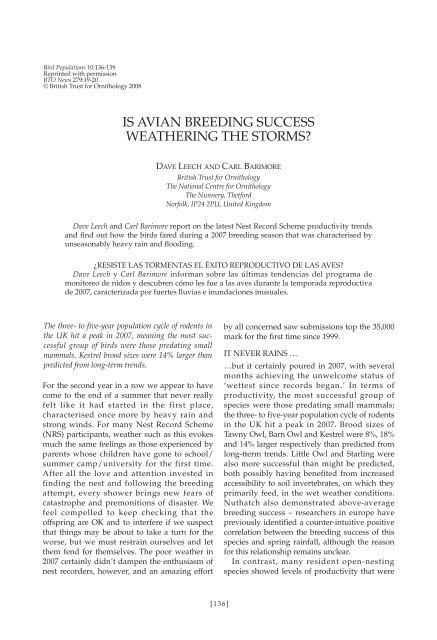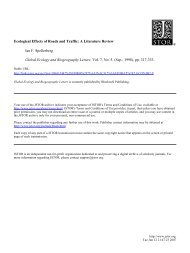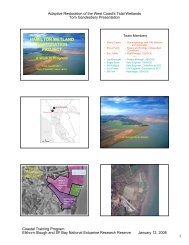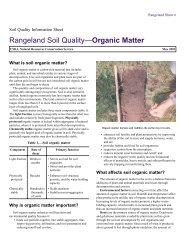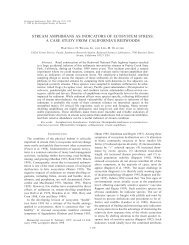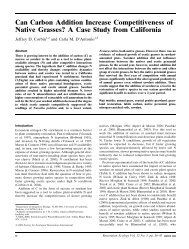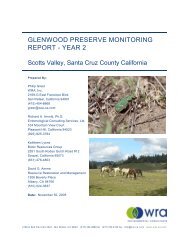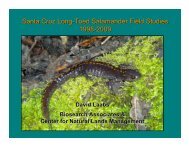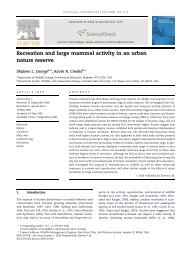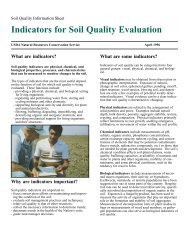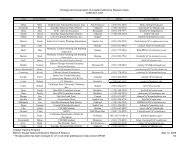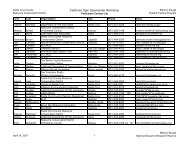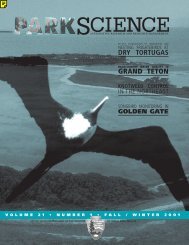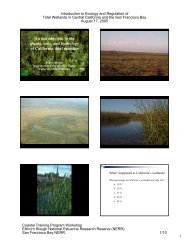BIRD POPULATIONS - Birdpop.org
BIRD POPULATIONS - Birdpop.org
BIRD POPULATIONS - Birdpop.org
- No tags were found...
Create successful ePaper yourself
Turn your PDF publications into a flip-book with our unique Google optimized e-Paper software.
Bird Populations 10:136-139Reprinted with permissionBTO News 279:19-20© British Trust for Ornithology 2008IS AVIAN BREEDING SUCCESSWEATHERING THE STORMS?DAVE LEECH AND CARL BARIMOREBritish Trust for OrnithologyThe National Centre for OrnithologyThe Nunnery, ThetfordNorfolk, IP24 2PU, United KingdomDave Leech and Carl Barimore report on the latest Nest Record Scheme productivity trendsand find out how the birds fared during a 2007 breeding season that was characterised byunseasonably heavy rain and flooding.¿RESISTE LAS TORMENTAS EL ÉXITO REPRODUCTIVO DE LAS AVES?Dave Leech y Carl Barimore informan sobre las últimas tendencias del programa demonitoreo de nidos y descubren cómo les fue a las aves durante la temporada reproductivade 2007, caracterizada por fuertes lluvias e inundaciones inusuales.The three- to five-year population cycle of rodents inthe UK hit a peak in 2007, meaning the most successfulgroup of birds were those predating smallmammals. Kestrel brood sizes were 14% larger thanpredicted from long-term trends.For the second year in a row we appear to havecome to the end of a summer that never reallyfelt like it had started in the first place,characterised once more by heavy rain andstrong winds. For many Nest Record Scheme(NRS) participants, weather such as this evokesmuch the same feelings as those experienced byparents whose children have gone to school/summer camp/university for the first time.After all the love and attention invested infinding the nest and following the breedingattempt, every shower brings new fears ofcatastrophe and premonitions of disaster. Wefeel compelled to keep checking that theoffspring are OK and to interfere if we suspectthat things may be about to take a turn for theworse, but we must restrain ourselves and letthem fend for themselves. The poor weather in2007 certainly didn’t dampen the enthusiasm ofnest recorders, however, and an amazing effortby all concerned saw submissions top the 35,000mark for the first time since 1999.IT NEVER RAINS ……but it certainly poured in 2007, with severalmonths achieving the unwelcome status of‘wettest since records began.’ In terms ofproductivity, the most successful group ofspecies were those predating small mammals;the three- to five-year population cycle of rodentsin the UK hit a peak in 2007. Brood sizes ofTawny Owl, Barn Owl and Kestrel were 8%, 18%and 14% larger respectively than predicted fromlong-tterm trends. Little Owl and Starling werealso more successful than might be predicted,both possibly having benefited from increasedaccessibility to soil invertebrates, on which theyprimarily feed, in the wet weather conditions.Nuthatch also demonstrated above-averagebreeding success – researchers in europe havepreviously identified a counter-intuitive positivecorrelation between the breeding success of thisspecies and spring rainfall, although the reasonfor this relationship remains unclear.In contrast, many resident open-nestingspecies showed levels of productivity that were[136]


